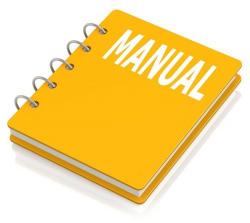Komatsu Mobile Crusher BR480RG-1 Factory Service & Shop Manual
Catalog:
Model:
Complete workshop & service manual with electrical wiring diagrams for Komatsu Mobile Crusher BR480RG-1. It's the same service manual used by dealers that guaranteed to be fully functional and intact without any missing page.
This Komatsu Mobile Crusher BR480RG-1 service & repair manual (including maintenance, overhaul, disassembling & assembling, adjustment, tune-up, operation, inspecting, diagnostic & troubleshooting…) is divided into different sections. Each section covers a specific component or system with detailed illustrations. A table of contents is placed at the beginning of each section. Pages are easily found by category, and each page is expandable for great detail. The printer-ready PDF documents work like a charm on all kinds of devices.
SEAM047100T - Mobile Crusher GALEO BR480RG-1 Operation & Maintenance Manual (SN1006&up).pdf
SEAWD03601 - Mobile Crusher GALEO BR480RG-1 Field Assembly Manual (SN1001&up).pdf
SEBD027901 - Mobile Crusher BR480RG-1 Shop Manual (SN1001&up).pdf
EXCERPT:
CONTENTS
01 GENERAL ... 01-1
10 STRUCTURE, FUNCTION AND MAINTENANCE STANDARD .... 10-1
20 TESTING AND ADJUSTING ... 20-1
90 OTHERS .. 90-1
…
STRUCTURE, FUNCTION AND
MAINTENANCE STANDARD HYDRAULIC PUMP
OPERATION
1. Operation of Pump
• Cylinder block (7) rotates together with shaft (1), and shoe (5) slides on flat surface A.
When this happens, rocker cam (4) moves along cylindrical surface B, so angle a between center line X of rocker cam (4) and the axial direction of cylinder block (7) changes. (Angle α is called the swash plate angle.)
• Center line X of rocker cam (4) maintains swash plate angle α in relation to the axial direction of cylinder block (7), and flat surface A moves as a cam in relation to shoe (5). In this way, piston (6) slides on the inside of cylinder block (7), so a difference between volume E and F is created inside cylinder block (7). The suction and discharge is equal to this difference F - E.
• In other words, when cylinder block (7) rotates and the volume of chamber E becomes smaller, the oil is discharged during that stroke. On the other hand, the volume of chamber F becomes larger, and as the volume becomes bigger, the oil is sucked in.
• If center line X of rocker cam (4) is in line with the axial direction of cylinder block (7) (swash plate angle = 0), the difference between volumes E1 and F1 inside cylinder block (7) becomes 0, so the pump does not carry out any suction or discharge of oil.
…





